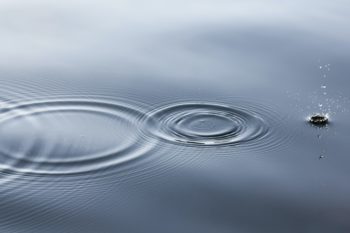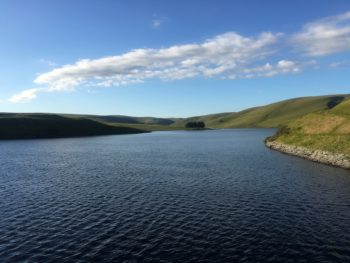Case Study: Reservoir water community monitoring for algal associated risk assessment
As a result of climate change, algae have begun to grow in reservoirs and cyanobacteria, also known as blue-green algae, are appearing more frequently in British water. Blue-green algae produces two substances, geosmin and 2-MIB, which are not harmful to people’s health but do give off an earthy or musty taste and smell when consumed.
Water companies are facing more and more complaints from the public that their water supply has this taste and smell. Some customers can taste the substances even at extremely low concentrations – as little as five billionths of a gram per litre. The water industry currently has a good understanding of the triggers and the interactions of those triggers with environmental variables that impact the taste and smell of water. However, the sector lacks near real-time live data streams for predictive risk assessment of Taste and Odour Events.
The project will build on environmental DNA (eDNA) monitoring methodologies to detect algae in drinking water to improve its taste and smell. It aims to improve the speed of delivery of sample processing and results through a user-friendly data visualisation portal. This will include academic partners analysing data to provide interpretation of Taste and Odour risk level.
The knowledge and technology developed during the project will be made accessible to water companies, enabling them to take the process in-house or establish the system as an outsourced service. The project will also advance reservoir sampling protocols to address Taste and Odour risk monitoring and the knowledge and skills from Cardiff University will be transferred out to the reservoir labs to improve the water sector’s understanding of how to analyse eDNA.
Cyanobacteria production of Taste and Odour metabolites is a globally increasing problem that has been directly linked to climate change, as warmer waters spur increased algal growth. eDNA benefits water companies across the world by enabling water treatment for taste and smell to be optimised in advance of an increase in their frequency and magnitude expected from climate change. This will reduce treatment costs and maintain customer confidence in their tap water. Using eDNA monitoring will significantly aid understanding of each individual reservoir, helping to develop site-specific solutions to Taste and Odour risk and result in greater operational resilience.
Dŵr Cymru advises others interested in entering future rounds of the Innovation Fund competitions to ensure that their solution is well-defined and the outcomes for customers are clear in their application form.
Ofwat has established a £200 million Innovation Fund to grow the water sector’s capacity to innovate, enabling it to better meet the evolving needs of customers, society and the environment.
As part of the Fund, Ofwat ran the first Innovation in Water Challenge (IWC) from January to April 2021. The primary objective of the first IWC was to encourage new ways of working that go beyond business-as-usual innovation practices in the water sector, in particular, increasing and improving collaboration and building partnerships from within and outside the water sector.
The IWC looked for all types of projects – be they technology, culture, business practices, commercial models or something else – that addressed big challenges facing the water sector and that aligned with one or more of Ofwat’s five strategic innovation themes.



